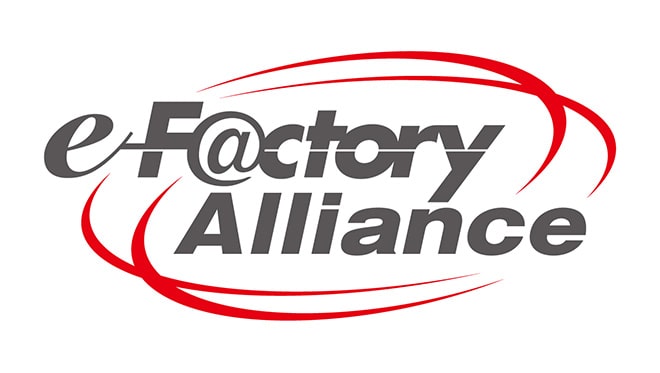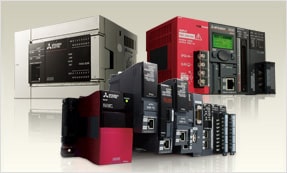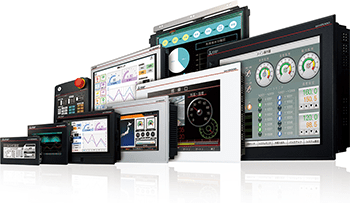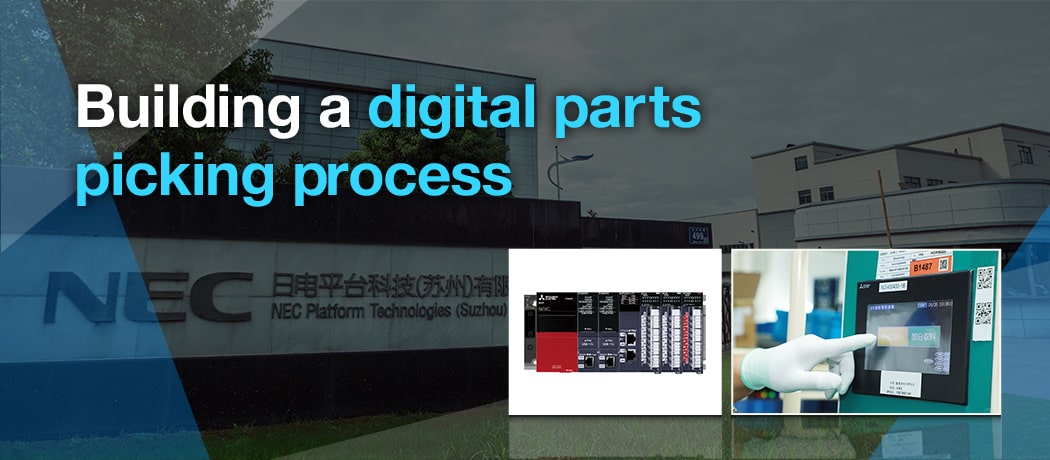
First released February, 2025
NEC Platform Technologies (Suzhou) Co., Ltd. a Chinese subsidiary of Japan’s NEC Platforms Ltd, has worked with NEC Solution Innovators and Mitsubishi Electric to create a highly efficient picking system utilizing PLCs and GOT HMIs. Thanks to the technical support and guidance provided by Mitsubishi Electric, the company gained valuable expertise and upgraded the skills of local staff, creating a sustainable system that can continue to expand and develop.
Key Points:
- 1. Eliminated parts supply errors in high-mix production environments.
- 2. Developed in-house AGVs and a system to monitor cleanroom temperature and humidity.
- 3. Empowered local staff with technical skills, ensuring sustainable system growth.
NEC Platform Technologies (Suzhou) Co., Ltd.

NEC Platforms Ltd., a leading provider of networking equipment, operates seven facilities in Japan and three internationally, including NEC Platform Technologies (Suzhou) in China. The plant mainly produces routers, with 58 different models being assembled on ten mixed-flow lines that allow production to be changed to meet any fluctuations in demand.
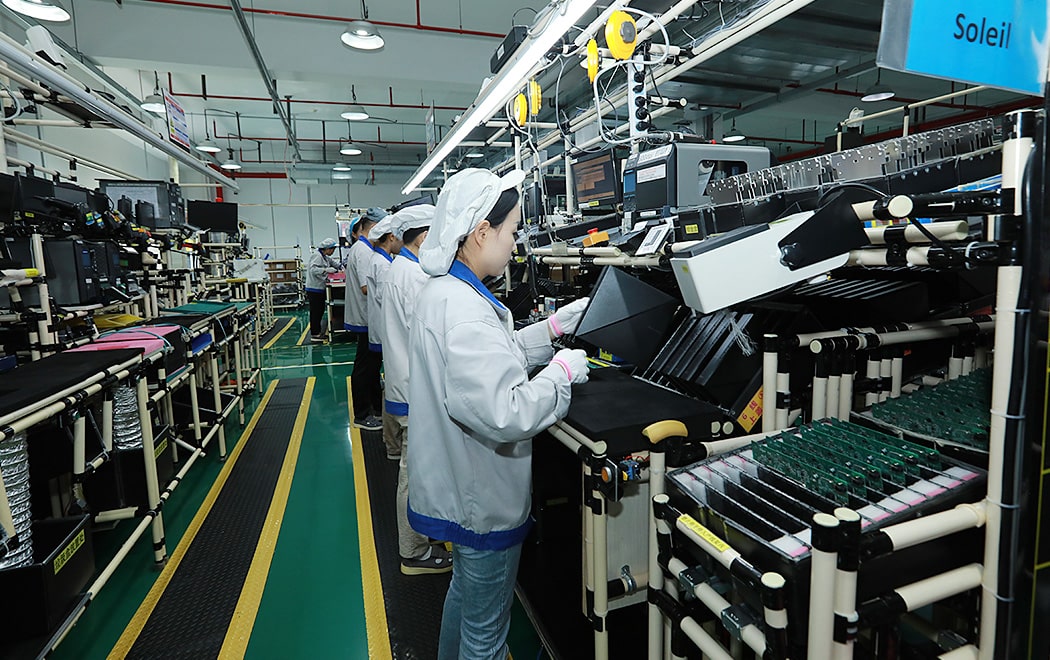
Router production line at the Suzhou plant. 58 models are assembled on ten mixed-flow lines.
To achieve this level of flexible production, the right parts must be delivered to each line based on the models ordered. On average, 15 components are needed per unit, but the plant uses 450 different parts across 58 router models, and even for the same model, parts may vary depending on the destination market. Picking the correct parts and delivering them on time is complex, and errors historically caused line stoppages, lowering production efficiency.
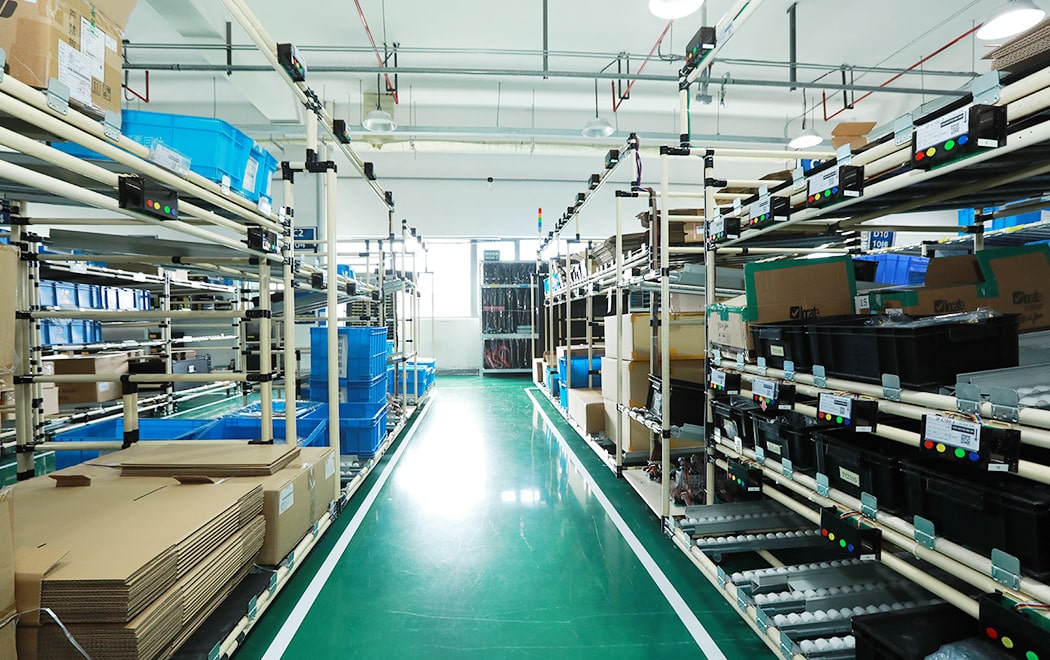
Shelves where router parts are stocked. Errors sometimes occurred when picking from 450 different parts.
Yuhei Fukushima, Assistant Manager of the Manufacturing Department at NEC Platform Technologies (Suzhou) Co., Ltd., was assigned from the Japanese parent company to oversee production.
“I wanted to tackle this issue from a system perspective,” he explains.
The challenge arose from a skills gap among local staff. While Fukushima and his team could address picking errors, Japanese staff were only temporarily stationed in Suzhou before returning to Japan. Therefore, relying solely on Japanese engineers wasn’t sustainable, so they needed to not only solve the root of the problem, but also to train the local staff to manage the process and any challenges independently.
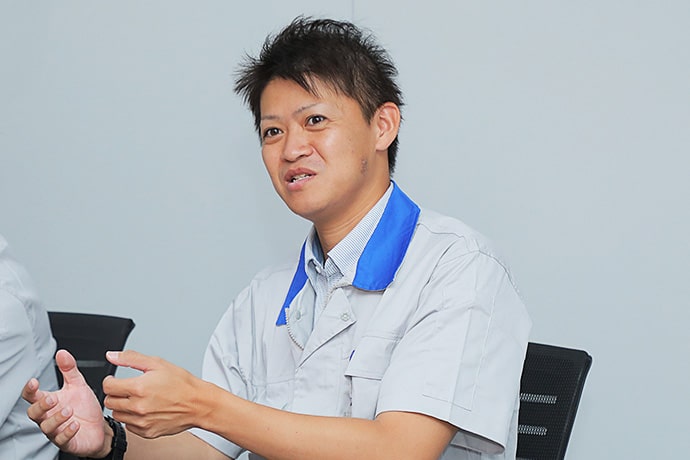
Yuhei Fukushima, Assistant Manager of the Manufacturing Department at NEC Platform Technologies (Suzhou) Co., Ltd until September 2024
No more picking errors, even with fewer operators
Fukushima set about introducing digitalization to the picking process. The result is a system linking work instructions with the shelves where parts are stored. Operators now use a barcode reader to scan a display indicating the model to be produced, which links to a parts database that lists which components are required. LEDs light up to indicate where the corresponding parts are located, making it easy for staff to pick and supply the right parts every time.

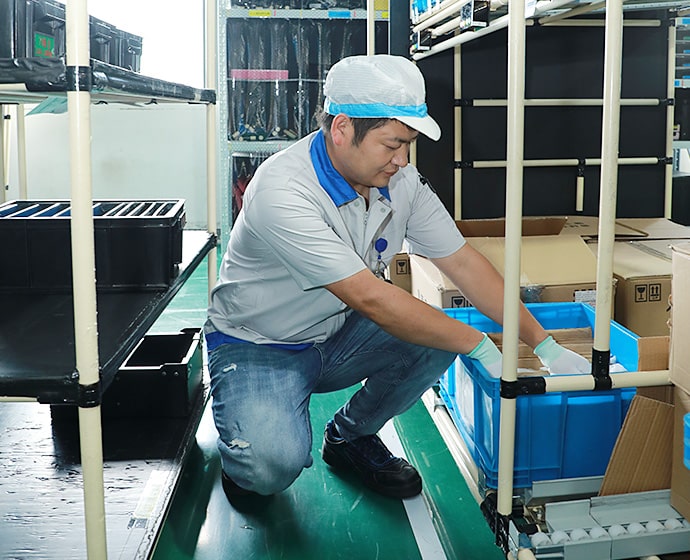
The digitalized picking process. When information about the model to be produced is scanned with a barcode reader, LEDs indicate which shelves the parts should be picked from. After picking the parts, the LEDs are turned off to prevent the same parts being picked twice.
Mitsubishi Electric’s PLCs, sensors, and GOTs were chosen for the system. Fukushima explains: “In Japan, we don’t tend to stick to a single vendor, so I’ve worked with various systems. However, Mitsubishi Electric equipment is always user-friendly.”
The digitalized picking system has completely eliminated parts supply errors and line stoppages. In addition, staffing levels could be reduced by up to 70% while maintaining reduced error rates, allowing reassigned staff to focus on other tasks. Furthermore, the digitalized system has also removed the need for a week-long training program for new staff—a significant advantage in China, where workforce turnover is high.
Developing systems in-house empowers local staff
Another key part of the project was automating the process of transporting parts to the production line after picking. The subsidiary developed its own automated guided vehicle (AGV) using a Mitsubishi Electric PLC for overall control. Building the AGV in-house reduced costs and, as Fukushima explains, “we saw it as a great opportunity to train local staff in technical skills.” The AGV’s route can be specified using the GOT’s touchscreen, allowing changes to be made easily without the need for any programming.
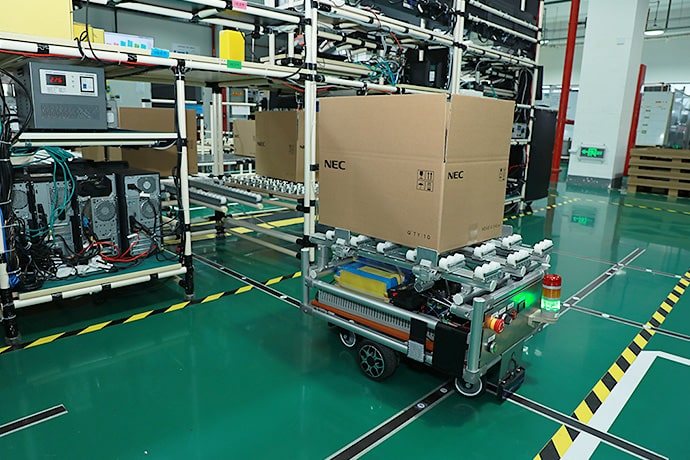
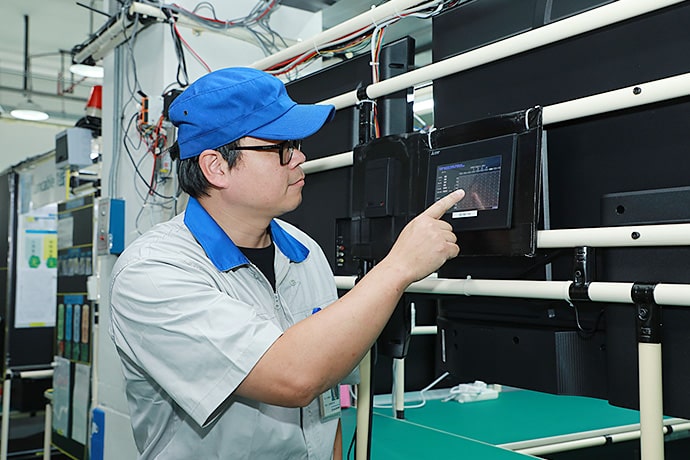
The AGV was developed in-house using a Mitsubishi Electric PLC. Routes can be changed by GOT touchscreen operation.
The company also created a system to remotely monitor the temperature and humidity in clean rooms. Previously, a staff member would have to measure and record conditions at ten points inside the clean room. Now, sensors collect this data via a Mitsubishi Electric MES interface unit, which displays it on an external monitor for real-time visualization. As well as reducing workload, this minimizes the need to enter the clean room, helping to maintain the controlled environment.
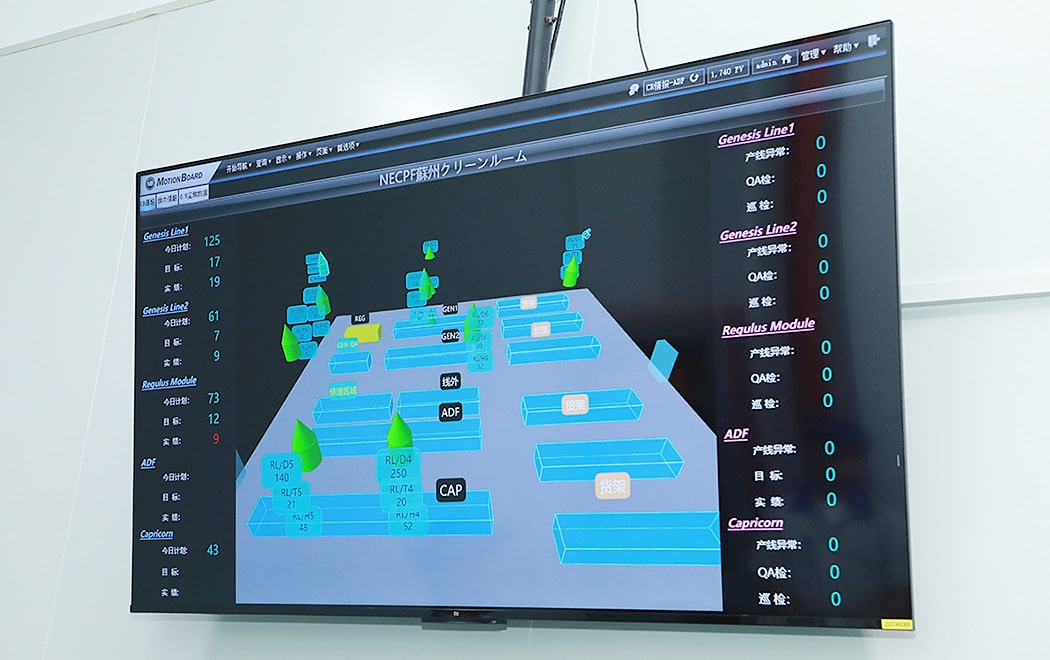
The system visualizes the temperature and humidity inside the clean room. Information from sensors is stored in a database via the MES interface unit. This can be implemented by parameter setting only, making it very easy to use.
A key benefit of the project was the ability to pass on valuable technical skills to local staff by developing the systems in-house. Fukushima collaborated with local engineers to program the digitalized picking process, helping to develop their programming skills. Local staff also acquired new automation knowledge through the creation of the AGV and clean room monitoring systems.
After returning to Japan, Fukushima said: “We have built a sustainable system that the local staff can continue to improve and expand themselves. I hope they will take on new challenges, like inventory management linked to ERP or using cameras to analyze issues.”
Providing optimal solutions in collaboration with our partners
This project was carried out in partnership with NEC Solution Innovators, a member of Mitsubishi Electric’s e-F@ctory Alliance. Since its launched in China in 2015, the e-F@ctory Alliance now has over 190 Chinese partners, actively introducing and promoting digital manufacturing. An example of the success of the initiative, NEC Solution Innovators has provided customized solutions to many of its customers as a member of the e-F@ctory Alliance.
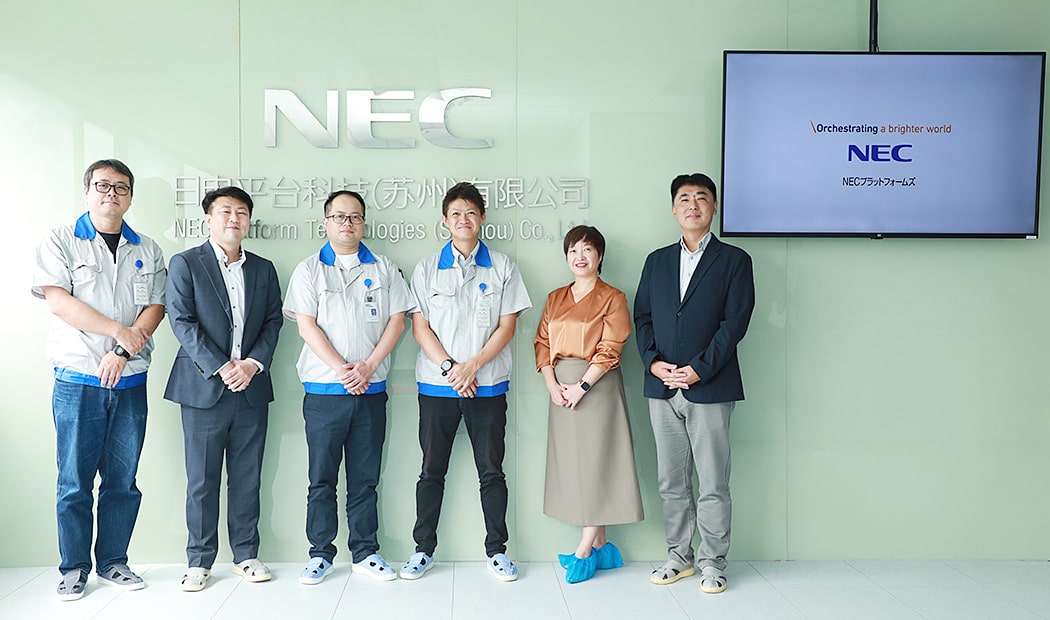
The project team behind the new system. From left:
Gu YiCheng, Expert, Factory Management Group, NEC Platform Technologies (Suzhou) Co., Ltd
Kaneko Toshiaki, Mitsubishi Electric Automation (China)
Wei GuangLiang, Production Engineering Group Manager, NEC Platform Technologies (Suzhou) Co., Ltd
Fukushima Yuhei, NEC Platform Technologies (Suzhou) Co., Ltd
Zhu WenJuen, NEC Solution Innovators
Tsujimura Satoshi, East China Region General Manager, NEC Solution Innovators
Products and Solutions

NEC Platforms, Ltd.
- Established: 2014
- Business areas: Manufacture of access network equipment
- URL : https://www.necplatforms.co.jp/en/index.html

